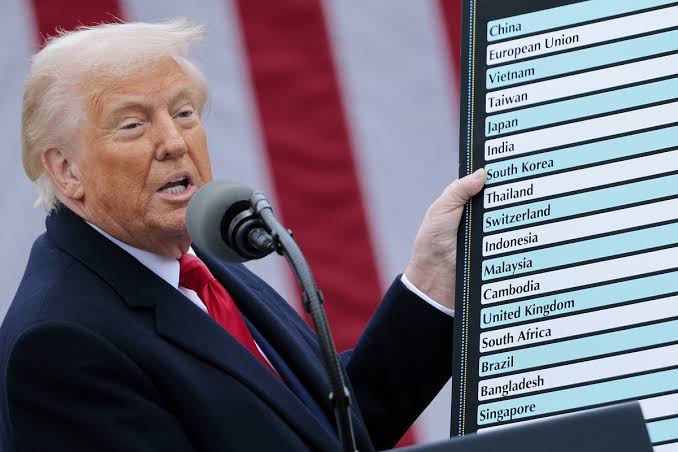News | Events | Digital PR | Advertising
Trump Declares ‘Liberation Day,’ Unleashes Sweeping Tariffs in Trade Shake-Up

In a bold move to reshape U.S. trade policy, President Donald Trump announced a sweeping set of tariffs on April 2, 2025, calling it a “Declaration of Economic Independence.” The new tariffs, which will take effect over the coming days, impose a universal 10% tax on all imports while introducing significantly higher rates on goods from key trade partners. The president framed the policy as a necessary step toward revitalizing American manufacturing and reducing reliance on foreign economies.
The most immediate change will be the blanket 10% tariff applied to all imported goods, which is set to take effect on April 5. Additionally, several countries face even steeper tariffs, with imports from the European Union now subject to a 20% tax, Japanese goods facing a 24% tariff, and Chinese products hit with a 34% rate. Some of the highest tariffs have been reserved for Vietnam and Cambodia, with rates exceeding 45%. The automotive industry will also see a major shift, as a new 25% tariff on all foreign-made cars is set to take effect at midnight on April 3, a move likely to impact both automakers and consumers.
In his announcement, Trump stated that these tariffs are designed to put American workers first and ensure the country no longer gets “ripped off” by international trade deals. He described the moment as the start of a “golden age” for the U.S. economy, arguing that the nation must take strong action to secure its financial independence and reduce its dependence on imports. However, the decision has already drawn sharp criticism from major trade partners, many of whom are now considering retaliatory measures.
European leaders were among the first to condemn the move, with officials warning that the tariffs could spark a new wave of trade conflicts between the U.S. and the EU. Canada and Mexico, both longtime economic allies, have also voiced their concerns, and analysts predict potential countermeasures from these nations. The financial markets reacted swiftly, with stocks for major companies like Walmart and Apple experiencing volatility as investors anticipate rising costs and potential supply chain disruptions.
Economists warn that while the tariffs are intended to boost domestic production, they could also lead to higher prices for American consumers and job losses in industries dependent on imported materials. The automotive sector, in particular, may see vehicle prices rise significantly, with some analysts predicting that the cost of new cars in the U.S. could increase by thousands of dollars.
Despite the global backlash, the Trump administration remains firm in its position, arguing that the move is necessary to strengthen the country’s economy. As the new tariffs take effect, businesses, consumers, and world leaders alike are bracing for the far-reaching consequences of one of the most aggressive trade policies in recent history.
Explore more
Tiwa Savage Marks Triumphant Return with New Album “This One Is Personal” After Five-Year Hiatus
After a long wait, Nigerian music superstar and queen of Afrobeats, Tiwa...
Scientists Research Nigeria’s Okra, Maize, Four Other Crops During NASA’s Space Mission
International astronauts will research six indigenous Nigerian crops and seeds during the...
Tinubu appoints Omotenioye Majekodunmi as Director-General of National Council on Climate Change
President Bola Ahmed Tinubu has appointed Mrs. Omotenioye Majekodunmi as the new...
Tinubu Extends Tenure Of The Comptroller-General Of Customs By A Year
President Bola Tinubu has approved a one-year extension of the tenure of...












Leave a comment